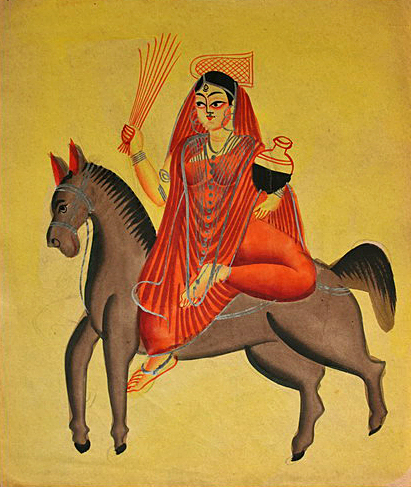An 1807 cartoon showing ‘The Vaccination Monster’
What has been will be again,
what has been done will be done again;
there is nothing new under the sun.
Ecclesiastes 1:9
We discuss the first anti-vaxxers (and review wine) in the fourth episode of the Quacks Who Quaff podcast.
The State of New York is currently in the midst of an epidemic. Measles, once eradicated from the USA has returned with a vengeance. Thanks to a rise in unvaccinated children fueled by the ‘anti-vaxxer’ movement 156 children in Rockwood County have been infected by measles; 82.8% of these had never had even one MMR vaccine. With measles now rampant in the boroughs of Brooklyn and Queens the state government has taken an unusual step. In New York in the USA, the home of liberty and personal choice, no unvaccinated under-18 year old is now able to set foot in a public space. Parents of unvaccinated children who break this ban will face fines or jail.
In a previous blog I wrote about the fight against smallpox first using variolation (which sometimes caused infection) and then the invention of the world’s first vaccine. This musing is about how vaccination was made compulsory in the United Kingdom, the subsequent fight against it through a public campaign and how that movement raised its head again in the last few decades. This is the story of the first ‘anti-vaxxer’ movement and how the arguments regarding vaccination show there isn’t really anything new under the sun.
Early opposition to vaccination
Following Edward Jenner’s work into using cowpox to offer immunity against smallpox in 1796 the Royal Jennerian Society was established in 1803 to continue his research.
Even in these early days there was opposition to the vaccine. John Birch, the ‘surgeon extraordinary’ to the Prince of Wales pamphleteered against Jenner’s work with arguments one might expect to see circulating today on social media:
A section of John Birch’s pamphlet from https://vaxopedia.org/2017/10/07/who-was-john-birch/
He of course did not mention how he was making a lot of money through inoculating patients against smallpox (a practice that vaccination would replace) or using novel treatments such as electrocution.
Wood painting caricature from 1808 showing Edward Jenner confronting opponents to his vaccine (note the dead at their feet) (Creative Commons)
Despite Birch’s efforts by 1840 the efficacy of Jenner’s vaccine was widely accepted. Decades before germ theory was established and viruses were identified we finally had a powerful weapon against a deadly disease. Between 1837 and 1840 a smallpox epidemic killed 6,400 people in London alone. Parliament was persuaded to legislate. The 1840 Vaccination Act made the unpredictable variolation illegal and made provision for free, optional smallpox vaccination.
At the time healthcare in the UK was largely unchanged since Tudor times. Parish based charity had been the core of support for the sick and poor until workhouses were made the centre of welfare provision in 1834. With the workhouse came a stigma that illness and poverty were avoidable and to be punished. Government was dominated by two parties, the Whigs and the Tories both of whom were non-interventionist and the universal healthcare provided by the NHS was over a century away. Consider this laissez-faire backdrop with punitive welfare. The fact free vaccination was provided is remarkable and I think reflects the giddy optimism at a future without ‘the speckled monster’ of smallpox.
The Anti-Vaccination Leagues
The Vaccination Act of 1853 went further. Now vaccination against smallpox was compulsory for all children born after 1st August 1853 within the first three months of their life with fines for parents who failed to comply. By the 1860s two-thirds of babies in the UK had been vaccinated.
There was immediate opposition to the 1853 Act with violent protests across the country. This was the state’s first steps into the health of private citizens. The response seems to have been motivated in much the same way as the modern day opposition in the US to vaccination and universal healthcare in general: that health is a matter of private civil liberty and that vaccination caused undue distress and risk. In England and Wales in particular although the penalties were rarely enacted their presence alone seems to have been motivation for opposition. The Anti-Vaccination League in London was established in 1853 to allow dissenting voices to coalesce.
The Vaccination Act of 1867 extended the age by which a child had to be vaccinated to 14 with cumulative fines to non-compliance. That same year saw the formation of the Anti-Compulsory Vaccination League. They published the National Anti-Compulsory Vaccination Reporter newsletter in which they listed their concerns, the first three being:
I. It is the bounden duty of parliament to protect all the rights of man.
II. By the vaccination acts, which trample upon the right of parents to protect their children from disease, parliament has reversed its function.
III. As parliament, instead of guarding the liberty of the subject, has invaded this liberty by rendering good health a crime, punishable by fine or imprisonment, inflicted on dutiful parents, parliament is deserving of public condemnation.
Further newsletters were formed over the following decades: the Anti-Vaccinator (founded 1869), the National Anti-Compulsory Vaccination Reporter (1874), and the Vaccination Inquirer (1879). All of these continued to place political pressure against compulsory vaccination. Much like today the main body of arguments focused on personal choice and the testimony of parents alleging that their child was injured or killed by vaccination. In Leicester in 1885 an anti-vaccination demonstration attracted 100,000 people. A staggering number when the city’s population in total at the time was around 190,000.
A royal commission was called to advise on further vaccination policy. After deliberation for seven years listening to evidence across the spectrum of opinion in 1896 they published their findings. Smallpox vaccination was safe and effective. However, it advised against continuing compulsory vaccination. Following the 1898 Vaccination Act parents who did not want their child to be vaccinated could ‘conscientiously object’ and be exempt. There was no further appetite for Parliament to intervene in the rights of parents. Even the fledgling socialist Labour Party, no enemy of government intervention, made non-compulsory vaccination one of its policies.
Whilst the two World Wars saw a change in public opinion towards a greater role in society for government, culminating in the creation of the National Health Service in 1948, vaccination remains voluntary in the United Kingdom. The first half of the 20th century saw the advent of vaccines against several deadly diseases such as polio, measles, diphtheria and tetanus. In 1966 an ambitious worldwide vaccination programme led by the World Health Organisation saw smallpox become the first disease to be eradicated by mankind in 1980. There were dreams of polio and measles going the same way. It was not to be.
Anti-vaccination re-emerges
Herd immunity is a key component for any vaccination programme to be effective. Not everyone can be vaccinated and so they rely on being surround by vaccinated people to prevent transmission. The level of vaccination in a population required for herd immunity varies between diseases. The accepted standard to prevent measles transmission is 90-95%.
On 28th February 1998 an article was published in the Lancet which claimed that the Measles, Mumps and Rubella (MMR) vaccine was linked to the development of development and digestive problems in children. Its lead author was Dr Andrew Wakefield, a gastroenterologist.
The infamous Lancet paper linking the MMR vaccine to developmental and digestive disorders
The paper saw national panic about the safety of vaccination. The Prime Minister Tony Blair refused to answer whether his newborn son Leo had been vaccinated.
Except just like John Birch nearly two centuries before him Andrew Wakefield had held a lot back from the public and his fellow authors. He was funded by a legal firm seeking to prosecute the companies who produce vaccines. This firm led him to the parents who formed the basis of his ‘research’. The link between children developing developmental and digestive problems was made by the parents of twelve children recalling that their child first showed their symptoms following the MMR vaccine. Their testimony and recall alone were enough for Wakefield to form a link between vaccination and autism. From a research sense his findings were no more useful than those the Victorian pamphlets used. But the damage was done. The paper was retracted in 2010. Andrew Wakefield was struck off as were some of his co-authors who did not practice due diligence. Sadly, this has only helped Wakefield’s ‘legend’ as he tours America spreading his message tapping in to the general ‘anti-truth’ populist movement. Tragically unsurprisingly, often in his wake comes measles.
Earlier this year the largest study to date investigating the links between MMR and autism was published. 657,461 children in Denmark were followed up over several years (compare that to Wakefield’s research where he interviewed the parents of 12 children). No link between the vaccine and autism was shown. In fact, no large high level research has ever backed up Wakefield’s claim.
There are financial and political forces at work here. Anti-vaccination is worth big money. The National Vaccination Information Center in the US had an annual income of $1.2 billion in 2017. And the people they target are economically and politically powerful. Recent research in America shows that parents who refuse vaccinations for their children are more likely to be white, educated and of higher income. They prize purity and liberty above all, emotional reasoning over logic. They vote. And their world view is prevalent in certain circles.
Tweet by Donald Trump 28th March 2014
In the UK in 2018 the rate of MMR vaccination was 91.8%, worryingly close to no longer being effective for herd immunity. There have been debates in the UK about re-introducing compulsory vaccination. In France certain childhood vaccinations are now compulsory. Social media companies are under pressure to silence the groups anti-vaxxers use to spread their message and recruit. The state is once again prepared to step into personal liberty when it comes to vaccines.
In 1901 52% of childhood deaths in England and Wales were due to infectious diseases. By 2000 it was 7.4%. In 1901 40.6% of all deaths were children. By 2000 it was 0.9%. No-one would want that progress to reverse. But history does have a habit of repeating itself if we let it. The debates continue to be the same: the rights of parents and the individual versus those of the state and public health necessity. This is a debate we have to get right. History tells us what will happen if we don’t. After all, there is nothing new under the sun.
Thanks for reading
- Jamie



